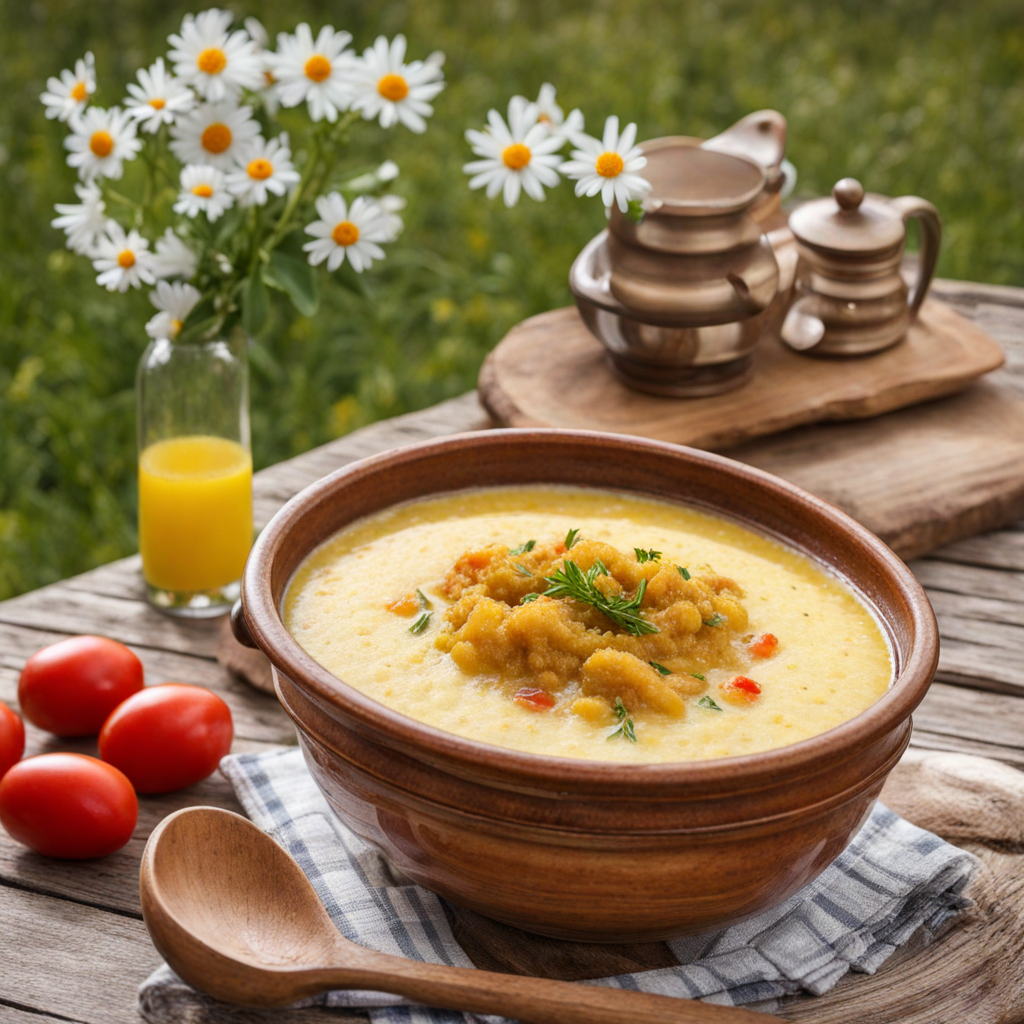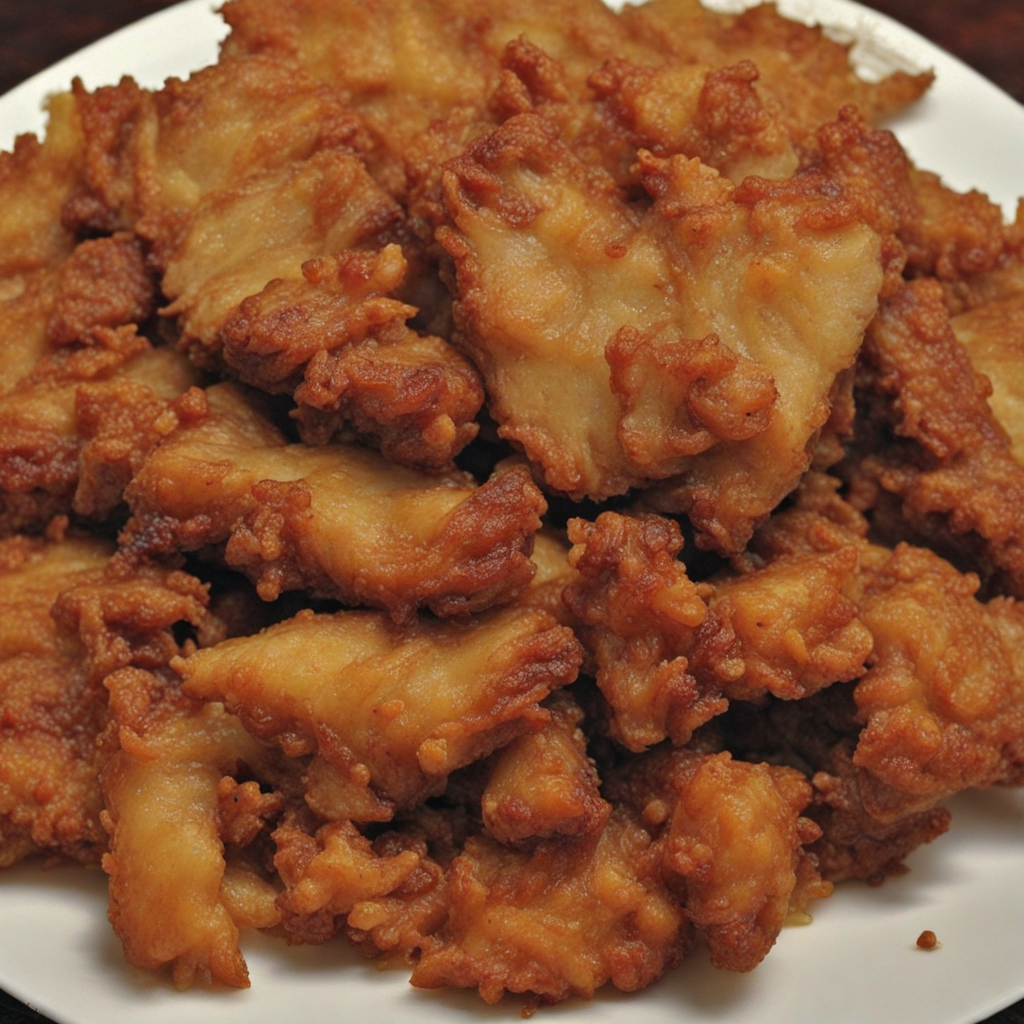Stuffed Bell Peppers
Stuffed Bell Peppers, or "Ardei Umpluți," are a beloved Romanian dish that showcases the vibrant flavors and culinary traditions of the region. The dish primarily features sweet bell peppers, which are hollowed out and filled with a savory mixture of ground meat, rice, onions, and a blend of aromatic spices. Each pepper is carefully prepared to ensure that the filling is packed tightly, allowing the flavors to meld beautifully during cooking. The peppers are often simmered in a rich tomato sauce, which adds a delightful acidity and depth to the dish, enhancing the overall taste experience. The choice of meat can vary, with options ranging from pork to beef or even a combination of both, making it a versatile dish that can cater to different palates. The rice not only serves as a filler but also absorbs the juices from the meat and spices, creating a hearty and satisfying meal. Fresh herbs like dill or parsley are commonly added to the filling, contributing freshness and a hint of brightness that balances the richness of the meat. Each bite delivers a harmonious blend of textures and flavors, making stuffed bell peppers a comforting and satisfying dish. Typically served with a dollop of sour cream on top, Stuffed Bell Peppers are often accompanied by crusty bread or polenta, allowing diners to enjoy every last bit of the delicious sauce. This dish is not just a staple in Romanian households but also a celebration of family gatherings and festive occasions. The colorful presentation of the stuffed peppers, with their vibrant hues and enticing aroma, invites everyone to partake in this delightful culinary experience that captures the heart of Romanian cuisine.
How It Became This Dish
The History of Ardei Umpluți: A Culinary Treasure of Romania #### Origins of Ardei Umpluți Ardei umpluți, or stuffed peppers, is a beloved dish in Romanian cuisine, renowned for its vibrant flavors and comforting essence. The origins of this dish can be traced back to the introduction of peppers to Europe following the Columbian Exchange in the late 15th and early 16th centuries. Peppers, originally from the Americas, quickly became popular across the continent, particularly in Eastern Europe, where they adapted beautifully into local culinary traditions. The concept of stuffing vegetables is not unique to Romania. Many cultures around the world have their own variations—such as the Middle Eastern dolmas or the Italian peperoni ripieni. However, the Romanian rendition has its distinct character, heavily influenced by local ingredients, agricultural practices, and the country’s rich tapestry of cultural influences. #### Ingredients and Preparation Traditionally, ardei umpluți is made using bell peppers, which are hollowed out and filled with a mixture of minced meat—usually pork or beef—combined with rice, herbs, and spices. Some recipes also include onions, tomatoes, and sometimes smoked bacon to enhance flavor. The stuffed peppers are then simmered in a savory tomato sauce, often infused with dill or other herbs, making each bite a delightful burst of flavors. The preparation of ardei umpluți is often a communal activity, particularly during family gatherings or special occasions, which emphasizes the dish's cultural significance. Families often come together to prepare large batches, with each member contributing to the process, from selecting the freshest ingredients to the final cooking. This communal cooking experience strengthens familial bonds and creates a sense of tradition that has been passed down through generations. #### Cultural Significance In Romania, food is a central part of social life and cultural identity. Ardei umpluți is often served at festive occasions, such as Christmas, Easter, weddings, and family reunions. It is a dish that transcends the everyday meal, connecting people to their heritage and to each other. The act of sharing food, especially a dish that requires effort and teamwork to prepare, enhances the communal spirit. Moreover, ardei umpluți reflects the agricultural richness of Romania. The country is known for its fertile lands, particularly in regions like Transylvania and Moldova, where peppers and tomatoes thrive. The use of local produce is not merely a culinary choice but a way of life that celebrates the connection between the land and the table. #### Development Over Time As Romania has evolved through various historical epochs, so too has the dish of ardei umpluți. The Ottoman Empire's influence brought new spices and cooking techniques that enriched Romanian cuisine, including stuffed dishes. The blending of various culinary traditions can still be seen in modern interpretations of ardei umpluți, which sometimes feature a variety of fillings beyond the traditional meat and rice, such as vegetarian options with lentils or quinoa. During the communist era, food shortages and economic constraints led to more creative adaptations of traditional dishes. Although the core of ardei umpluți remained, resourcefulness became essential. Families would often substitute ingredients based on availability, leading to a broader range of interpretations, including the use of grains or various types of protein. In contemporary Romania, ardei umpluți has regained its status as a cherished classic, often seen in restaurants and homes alike. The resurgence of interest in traditional cooking has led to a revival of authentic recipes, emphasizing quality ingredients and traditional methods. With the rise of the farm-to-table movement, many chefs are now focusing on seasonal and locally-sourced produce, further enriching the dish's connection to Romanian culture. #### Modern Variations Today, ardei umpluți can be found in various forms, reflecting both regional preferences and personal creativity. Some cooks opt for a vegetarian version, utilizing ingredients like mushrooms, zucchini, or even grains like bulgur. Others may experiment with unconventional spices or fillings, incorporating elements from international cuisines to create fusion dishes that still honor the essence of Romanian flavors. The dish is also featured in numerous culinary festivals across Romania, where chefs compete to create the most innovative and delicious versions of ardei umpluți. This not only showcases the adaptability of the dish but also reinforces its importance in Romanian culinary heritage. #### Conclusion Ardei umpluți is more than just a dish; it is a symbol of Romanian culture and identity. Its rich history illustrates the journey of ingredients from distant lands to the heart of Romanian kitchens, shaped by the hands of generations. This delightful meal embodies the warmth of family gatherings, the bounty of the land, and the creative spirit of a nation that has weathered many storms yet continues to celebrate its culinary traditions. As Romania continues to modernize and evolve, ardei umpluți remains a steadfast reminder of the past—a dish that connects people to their roots while also allowing for personal expression. Whether enjoyed at a festive occasion or as a comforting weeknight dinner, ardei umpluți serves as a delicious testament to the enduring power of food to bring people together and to tell the story of a culture rich in history and flavor.
You may like
Discover local flavors from Romania







